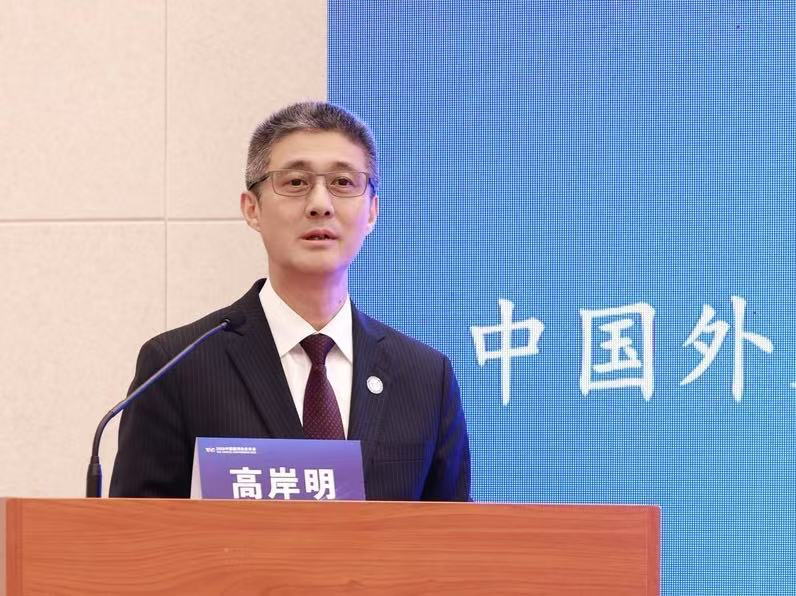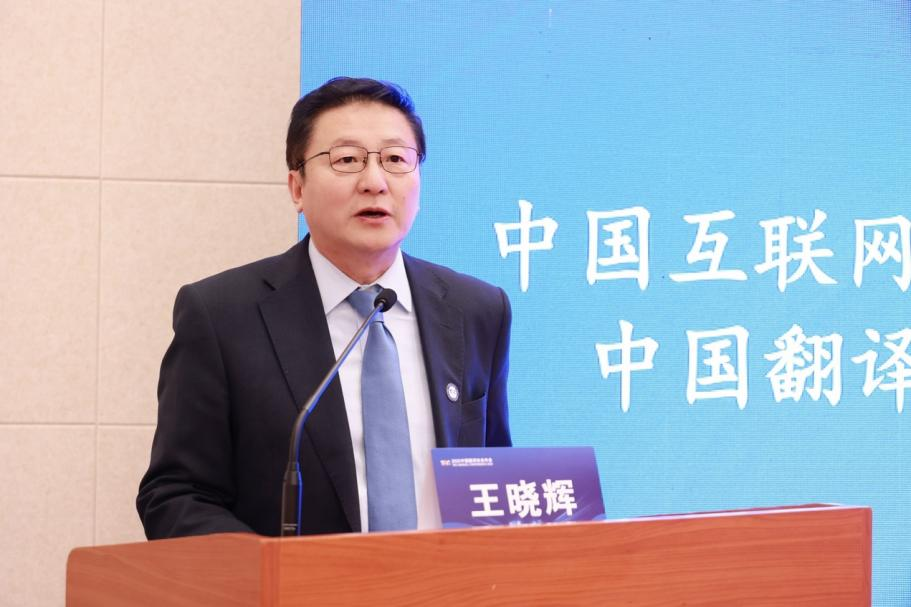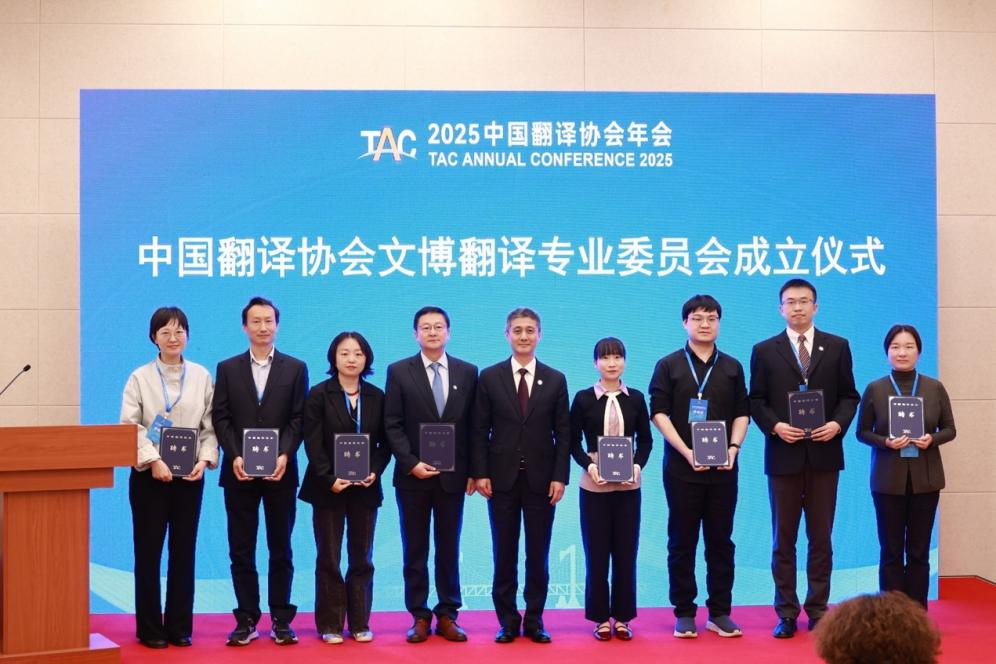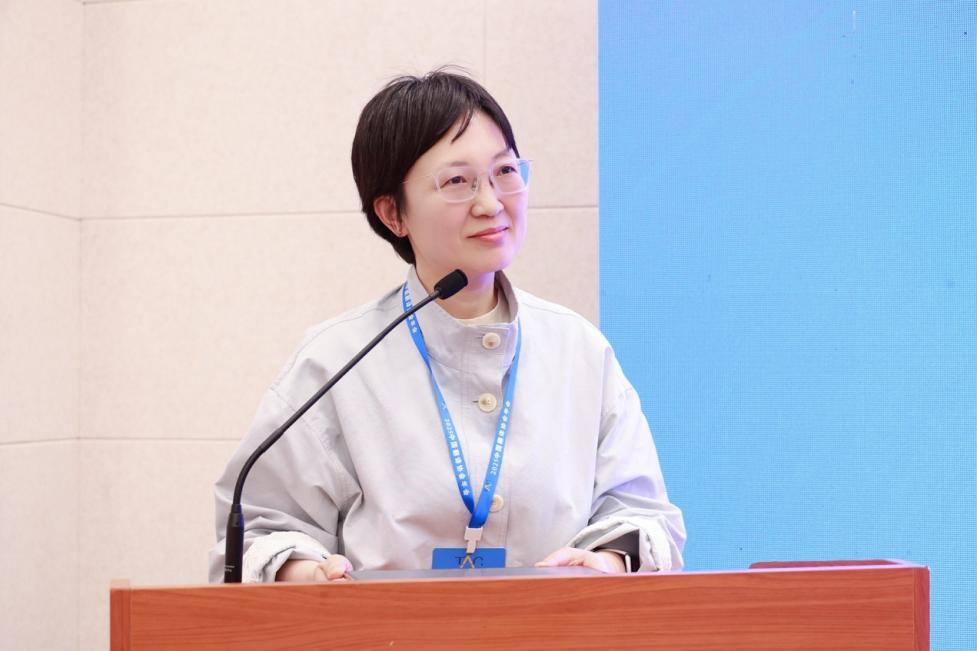On April 24, a seminar focusing on translation in the museum and cultural heritage sectors was held in Dalian, Liaoning province. The event was jointly organized by the Translators Association of China (TAC), the Palace Museum, and the Academy of Translation and Interpretation (ATI) of China International Communications Group (CICG). Yuan Hong, deputy director of the International Exchange Department of the Palace Museum, presided over the meeting. Yuan is also the deputy chair and secretary-general of TAC’s Cultural Heritage Translation Committee. Gao Anming, editor-in-chief of CICG and executive vice president and secretary-general of TAC, and Wang Xiaohui, editor-in-chief of China Internet Information Center and vice president of TAC and chair of TAC’s Cultural Heritage Translation Committee, attended and delivered speeches. Nearly 200 experts and scholars in museum, cultural heritage, and international communication sectors attended the meeting.

Gao Anming, editor-in-chief of China International Communications Group and executive vice president and secretary-general of the Translators Association of China (TAC), delivers a speech at TAC’s annual conference of in Dalian, Liaoning province, April 24, 2025.
During the meeting, Gao Anming announced the establishment of TAC’s Cultural Heritage Translation Committee and presented letters of appointment to its leadership members. He said that the committee will serve as an important platform for further promoting the development of translation professionals, facilitating international exchange and cooperation, and accelerating the building of an international discourse system in the fields of museums and cultural heritage. Gao noted that this initiative is of great significance for promoting high-quality development in cultural heritage translation and international communication.

Wang Xiaohui, editor-in-chief of China Internet Information Center and vice president of the Translators Association of China (TAC) and chair of TAC’s Cultural Heritage Translation Committee, delivers a speech at TAC’s annual conference in Dalian, Liaoning province, April 24, 2025.
Wang Xiaohui noted that the establishment of the committee marks a significant milestone for China’s translation industry. He highlighted that effective cultural heritage translation requires depth in research, breadth in perspective, richness in knowledge, and dedication to practice. The committee will work toward standardization of translation related to museum and cultural heritage sectors and encourage greater participation in China’s cultural heritage translation efforts.

Gao Anming presents letters of appointment to the leadership members of the Cultural Heritage Translation Committee of the Translators Association of China (TAC) at TAC’s annual conference in Dalian, Liaoning province, April 24, 2025.
The meeting featured discussions on establishing standardized systems for translation and international communication in China’s museum and cultural heritage sectors. The agenda was compact yet rich in content. During the session of keynote speeches, speakers included Jiang Xiaochenyang, researcher at Peking University’s School of Archaeology and Museology, Shi Wanghuan, deputy director of the Exhibition Department at the China Cultural Relics Exchange Center, Xia Meifang, director of the Translation Office at the International Liaison Department of the National Museum of China, Yang Ruochen, staff member of the International Exchange Department of the Palace Museum, Zhang Liang, director of the Editorial Department of “The Museum” at the Capital Museum, Qin Su, deputy director of the Department of Major Translation Projects at ATI of CICG, and Luo Hongyan, chief translator at GTCOM Technology Corporation.

Yuan Hong, deputy director of the International Exchange Department of the Palace Museum and deputy chair and secretary-general of the Cultural Heritage Translation Committee of the Translators Association of China (TAC), presides over the seminar during TAC’s annual conference in Dalian, Liaoning province, April 24, 2025.
The leadership members of TAC’s Cultural Heritage Translation Committee come from a number of institutions. These include national organizations such as CICG, the National Cultural Heritage Administration, and the China Cultural Relics Exchange Center; cultural institutions such as the Palace Museum, the National Museum of China, the Dunhuang Academy, the Capital Museum, the Shanghai Museum, the Shaanxi History Museum, and the Henan Museum; universities such as Peking University, Beijing Foreign Studies University, the Communication University of China, and Jingdezhen Ceramic University; as well as cultural enterprises like Poly Culture Group Corporation Limited. The committee brings together members with complementary strengths and combines academic research with hands-on translation experience. As the host of the committee’s secretariat, the Palace Museum will collaborate with member organizations to carry out relevant work.
This seminar marks a new step toward standardized development of cultural heritage translation in China. Reflecting the richness of China’s 5,000-year civilization, the Palace Museum will continue to build its capacity for international communication and foster mutual learning among civilizations through translation. It aims to share more stories of cultural relics that reflect the essence of Chinese civilization with audiences around the world. The Palace Museum also hopes to become a global hub for cultural exchange and to explore new ways of connecting traditional Chinese culture with the achievements of other world civilizations.
Looking ahead, the Palace Museum will leverage its role as the secretariat of TAC’s Cultural Heritage Translation Committee to strengthen the development of translation professionals in the museum and cultural heritage sectors, enhance translation and international communication efforts, build a more advanced platform for cultural heritage exchange, and provide strong support for China’s cultural heritage sector to engage more effectively with the world.



